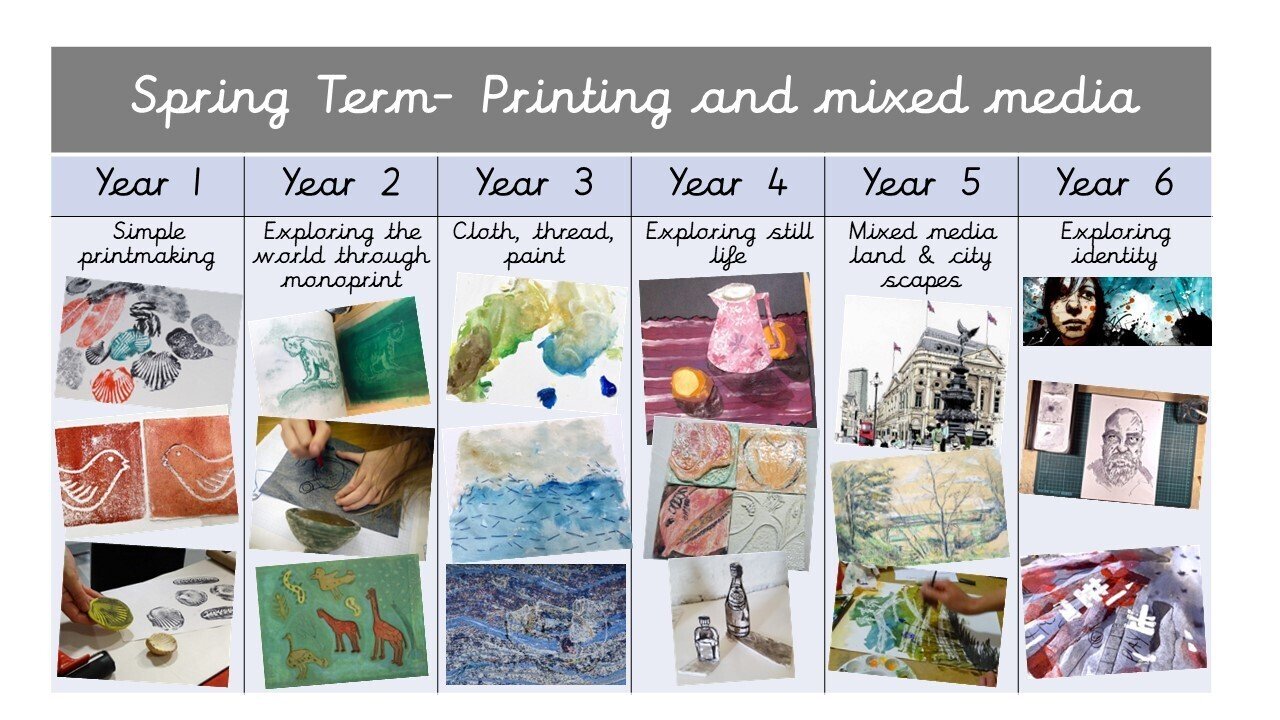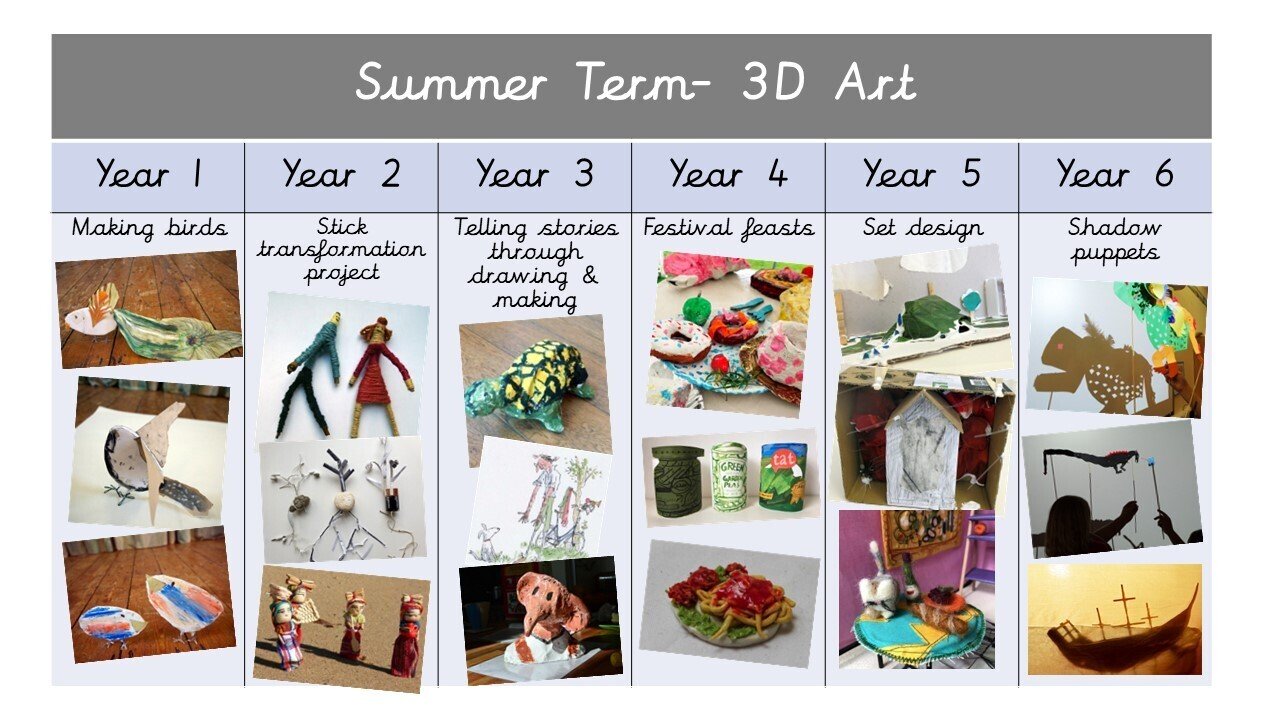Art
Drawing makes you see things clearer, and clearer and clearer still, until your eyes ache.
David Hockney
Intent
Our Art curriculum provides a well-rounded education that fosters creativity, self-expression, and critical thinking skills. We believe that art empowers all children including those with SEND to develop a deeper understanding of themselves and the world around them, and we aim to cultivate this by providing a rich, diverse, and stimulating curriculum for all pupils that builds on children's interests and experiences.
At Our Lady and St Brendan's, we want our children to learn that art should be about provoking a reaction. We want our children to be artists in that they freely express their own creativity and are not encumbered by the expectation of others. We believe that for our children, art, craft and design embody some of the highest forms of human creativity. A high-quality art and design education should engage, inspire and challenge pupils, equipping them with the knowledge and skills to experiment, invent and create their own works of art, craft, design and sculpture. As artists, their progression will be measured in their ability to critically review their own and others’ work and
experience a range of works of art.
They will critically evaluate and recreate the work of famous artists including David Hockney, born into our locality and other West Yorkshire – born artists; Henry Moore and Barbara Hepworth. The pupils will study both modern and classic art across the curriculum and should know how art and design both reflect and shape our history, and contribute to the culture, creativity and wealth of our nation. As the pupils develop their oracy through their expression and opinion, they will also know how art and design both reflect and shape our local, national and international cultural footprint. They will also explore how art contributes to the culture, creativity and wealth of countries around the world and by comparing the work of local artists to the work of others globally, we hope that pupils will develop an aspirational to reach for their creative stars.
Implementation
The aims of our art, craft and design curriculum are taken directly from the Early Learning Goals and the National Curriculum.
To achieve our intent, we have developed a comprehensive art curriculum that is well-sequenced, relevant, and engaging for all students. We have ensured that the curriculum covers a range of media, including painting, drawing, sculpture, printmaking, and digital media, with some lessons taken from AccessArt as inspiration. We have also included opportunities for students to learn about the history of art, explore different styles and techniques, and reflect on the meaning and purpose of art in their lives and communities.
Our Art lessons are led by well-supported and knowledgeable teachers who are committed to providing high-quality learning experiences for our children. They use a range of teaching methods and resources to support student learning, including demonstrations, guided practice, peer feedback, and self-reflection. They also incorporate real-life contexts and experiences into their lessons, such as visits to galleries and exhibitions, working with artists, and showcasing student work in public spaces. Children in Years 1-6 will all use sketchbooks bursting with creative processes and contain opportunities to record, review and revisit their ideas. Children will begin each lesson with a drawing warm up activity, which is recorded in the back of their sketchbooks.
Pupils with SEND are well supported in Art lessons. Art provides opportunities for enjoyment and achievement that can be missing from other areas of the curriculum. The development of the senses is central to art and design, using sight, touch, emotional response and intellect to learn about different elements of visual language: line, colour, texture, shape, form and space. Direct handling and manipulation of materials build on a child's natural interest in shape, colour, rhythm and movement and can lead naturally into developing skills and confidence. Lessons are planned to ensure that there is success in all activities, matching each pupil's level of ability.
Art and DT alternate each half term. Art units of work for each class are categorised under the same discipline; for example, each class will focus on drawing and painting in the Autumn term. Children are provided with a learning map in their sketchbook as well as a sequence of lessons, allowing them to visualise their learning journey and understand the end product. Further, children will reflect on their learning at the end of a unit through self-assessment against the statements on the learning map. Metacognitive thinking has proven to be a driver of success (EEF, 2018). Here is an example of a learning map and lesson sequence:
Impact
Through our Art provision, our children have developed a range of technical and creative skills, including drawing, painting, sculpture, and digital media. They have learned to communicate their ideas and emotions through artistic expression and have developed a deep appreciation and understanding of art as a form of communication, culture, and social commentary.
Our Art provision also provides support our students' mental health and well-being, providing them with a safe and inclusive space where they can express themselves, explore their emotions, and build resilience. Furthermore, it has helped our students develop critical thinking and problem-solving skills, as well as confidence and self-esteem, a key driver in learning.










